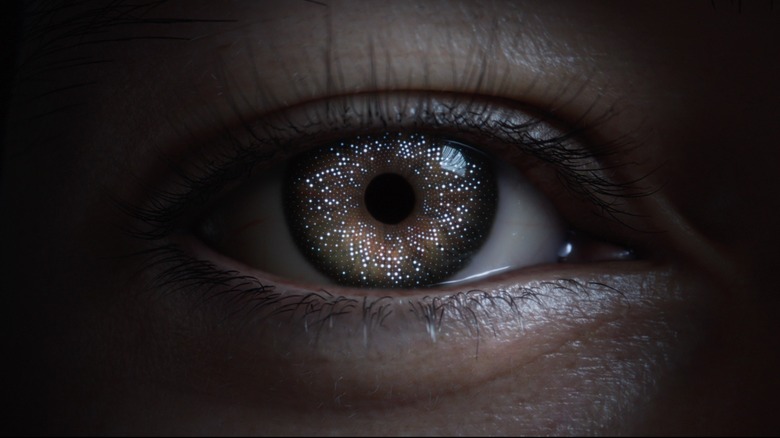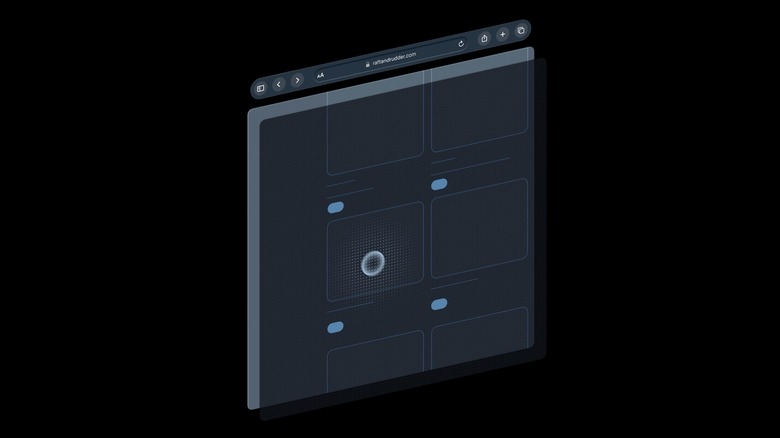Optic ID Is The Vision Pro's Twist On Face ID Security
The biggest reveal of WWDC 2023 was the Vision Pro headset, but one system in particular that really stood out was Optic ID, which leverages the bevy of onboard sensors to create a whole new system of biometric authentication with your eyes at the center of it. Optic ID banks on the fact that just like fingerprints, each person's iris offers a distinct biometric identifier pattern that can be used as a secure method for personality verification. The focus is clearly on convenience here. As soon as you wear the Vision Pro headset, the inward-facing optical sensor array illuminates the iris and unlocks the device after duly matching it.
Unsurprisingly, Apple is giving the security treatment to Optic ID as Face ID, storing all of the optical recognition data in a secure enclave protected by layers of encryption so that it can't be tampered with. Plus, it can only be called upon at the hardware level and never leaves the Vision Pro headset at any level.
With security protocols handled, Apple is once again chasing the convenience iPhone users get with Face ID-based authentication. So, be it verifying an Apple Pay transaction or logging into an online service, Optic ID wants to be the next evolution of biometric identification for Apple hardware and software, after using fingerprints for Touch ID and facial 3D map for Face ID.
Eyes become identity across the Apple experience
Not too long ago, Apple introduced a system that allowed users to control whether an app could track their activity, which is essentially a trail of the web activity that you leave with your taps or mouse clicks on a computer. In the same vein, Apple is treating Vision Pro users' eye gaze as a digital fingerprint. But this time, Apple will outright block any third party from knowing what part or element of the screen users' eyes were exploring.
Third parties will only be able to zero down on the movement once users click on an on-screen item. Apple does this by isolating eye input and observation to separate background processes. Moreover, irrespective of the app you are running, they won't get access to your surroundings captured by the external cameras.
The Optic ID system seems tailor-made for Passkeys, a password-less log-in system that already accepts Face ID and Touch ID for authentication. However, Apple didn't explicitly confirm whether Optic ID will be integrated with the Passkeys system when the Vision Pro headset hits the shelves. The headset costs a handsome $3,499 and will be available early next year, hoping to kickstart a new computing trend that relies on the immersive experience offered by AR and VR.

